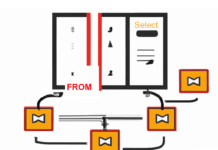Welcome to our new series of articles, PHP Design Patterns Game ! In this series, we will explore various design patterns and their implementation in sample and easy games using PHP. Each article will introduce a new design pattern and walk you through a game implementation that utilizes it.
In this first article, we will dive into the Singleton Pattern, a creational design pattern that ensures only one instance of a class exists throughout the program. We will show you how to use the Singleton Pattern to create a game that allows only one player to access a certain feature at a time.
We hope this series will help you understand the importance of design patterns in building robust and scalable applications. So, let’s get started with the first game implementation using the Singleton Pattern!
Singleton Pattern
Let’s say you’re creating a simple puzzle game where the objective is to move a player character to a goal. The game is turn-based, and each turn the player can make a move in any direction (up, down, left, or right).
To keep track of the game state, you might create a Game class that holds information about the player’s position, the goal position, and the game board. However, since there can only be one instance of the game at a time, you would want to ensure that multiple instances of the Game class can’t be created.
To enforce this constraint, you can use the Singleton pattern. Here’s an example implementation of the Game class as a Singleton:
class Game {
private static $instance = null;
private $playerX;
private $playerY;
private $goalX;
private $goalY;
private $board;
private function __construct() {
// initialize game state
$this->playerX = 0;
$this->playerY = 0;
$this->goalX = 3;
$this->goalY = 3;
$this->board = array(
array(0, 0, 0, 0),
array(0, 0, 0, 0),
array(0, 0, 0, 0),
array(0, 0, 0, 0)
);
}
public static function getInstance() {
if (self::$instance === null) {
self::$instance = new Game();
}
return self::$instance;
}
public function movePlayer($dx, $dy) {
// update player position and game state
$newX = $this->playerX + $dx;
$newY = $this->playerY + $dy;
if ($newX >= 0 && $newX < 4 && $newY >= 0 && $newY < 4) {
$this->playerX = $newX;
$this->playerY = $newY;
// update board state
$this->board[$this->playerY][$this->playerX] = 1;
return true;
}
return false;
}
public function isGameOver() {
return $this->playerX === $this->goalX && $this->playerY === $this->goalY;
}
public function printBoard() {
// print game board
for ($y = 0; $y < 4; $y++) {
for ($x = 0; $x < 4; $x++) {
if ($this->board[$y][$x] === 1) {
echo "P ";
} else if ($y === $this->goalY && $x === $this->goalX) {
echo "G ";
} else {
echo ". ";
}
}
echo "\n";
}
}
}In this implementation, the Game class has a private static $instance property that holds the Singleton instance. The getInstance() method returns the Singleton instance, creating it if necessary.
By making the Game class a Singleton, you can ensure that there is only one instance of the game at a time, and any code that needs to access the game state can simply call Game::getInstance() to get the current game instance.
Here’s an example of how you could use the Game class in PHP:
// Create a new instance of the Game class
$game = Game::getInstance();
// Set up the game board
$game->setup();
// Loop until the game is over
while (!$game->isOver()) {
// Display the current game board
$game->displayBoard();
// Get the next move from the user
$move = readline("Enter your move (row, column): ");
list($row, $col) = explode(",", $move);
// Make the move on the game board
$game->makeMove($row, $col);
}
// Display the final game board and winner
$game->displayBoard();
echo "Winner: " . $game->getWinner() . "\n";In this example, we first create a new instance of the Game class using the getInstance() method. We then set up the game board using the setup() method.
We then enter a loop that continues until the game is over. In each iteration of the loop, we display the current game board using the displayBoard() method. We then prompt the user for their next move and make that move on the game board using the makeMove() method.
Once the game is over, we display the final game board and determine the winner using the getWinner() method.
In conclusion, the Singleton pattern is a useful design pattern for creating classes that should have only one instance throughout the lifetime of an application. In this article, we have seen how the Singleton pattern can be applied to create a game class that ensures only one instance of the game is created and accessed by the players. By using the Singleton pattern, we can avoid unintended multiple instances of the game class, prevent issues with shared game data, and simplify the overall game design. In future articles in this PHP Design Patterns Games series, we will explore other design patterns that can be applied to create effective and efficient game architectures.


























